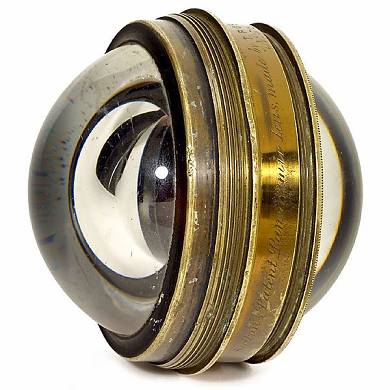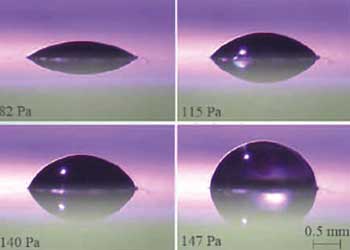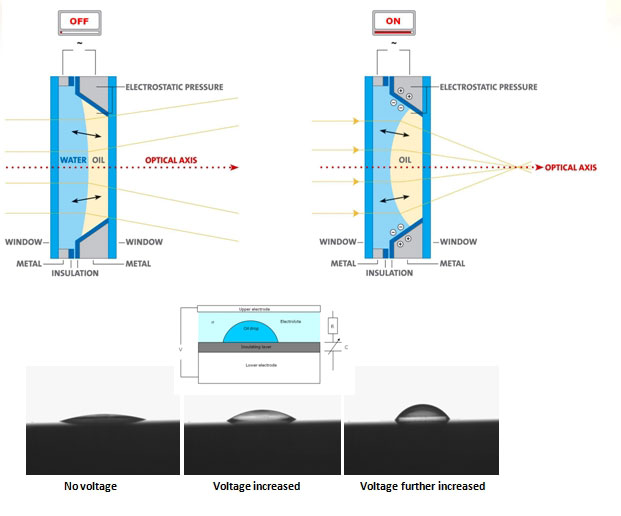cctv lens
lens
NEWS
Liquid Lenses
author:Bruno Berge time:2020-6-22 Number of click:2786

Liquid lens
Every child knows that oil and water don't mix, but it might be news to most adults that the two substances can combine to take a picture. The liquid lens, a revolutionary optical device invented and patented by French physicist-turned-entrepreneur Bruno Berge, is shaking up the market for optical instruments. This innovative lens enables better, cheaper and smaller optical devices and is already used in a wide range of products, including ID readers (such as barcode or passport readers) and industrial cameras.
Liquid lens Scientist turned entrepreneur
It takes an inventor's keen eye to see commercial potential in the behaviour of a drop of water stimulated by electricity. Bruno Berge's sharp foresight set him on a course that recast an accomplished scientist as a successful entrepreneur.
Berge began his scientific career at the University of Grenoble, France, where he was awarded his PhD in physics. Following two years of post-doctoral research at the University of Chicago, he returned to Grenoble in 1991. There, he took up a research position investigating liquid interfaces - the boundaries between liquids that can't be mixed - at the French National Centre for Scientific Research (CNRS).
In his spare time, Berge pursued and conducted his own research and experiments. He eventually came across a phenomenon discovered around the turn of the 20th century by his countryman and fellow physicist Gabriel Lippmann, who won the Nobel Prize in 1908 for inventing colour photography.
Berge became fascinated by a topic investigated by Lippmann: the shape-altering effects of an electric charge applied to liquid on a conducting surface, a phenomenon referred to as ‘electrowetting'.
“At the beginning I had no concrete application in mind, but I saw the potential of the technology. The question was where to use it.”
Shape shifting
Berge believed that manipulating the shape of a liquid would also change the way it refracted light, which - for all practical purposes - would turn it into a lens. Comparable to a drop of water that can function as a magnifying glass, two clear, non-mixable liquids can serve as a lens, depending on the curvature of their interface. Because this curvature changes when a current is applied, they enable an image to be captured and focused.
With the aid of a research grant, Berge was able to design the prototype of a liquid lens that changes focus when a small amount of electricity is applied.
Looking back, Berge noted that "at the beginning, I had no concrete application in mind, but I saw the potential of the technology. The question was where to use it."

Taking matters into his own hands
Encouraged by the success of his early prototype, Berge first approached the camera-maker Canon with his invention. When the company declined, he decided to strike out on his own instead of seeking a corporate buyer.
With the help of state funding, in particular through the intellectual property and technology transfer organisation France Innovation Scientifique et Transfert SA, as well as leading French and international investment funds, Berge founded the company Varioptic in 2002 with the aim of commercialising his liquid lens technology.
In the process, the scientist-turned-entrepreneur stepped down from his professorship in physics at the École Normale Supérieure de Lyon to concentrate on the challenges of running a company. For a year and a half Berge functioned as CEO of the start-up; then he passed on the reins to Etienne Paillard so he could focus on the research and development of his nascent technology in the role of Chief Technology Officer, a position he still holds today.
Varioptic's technology is already found in many devices such as ID readers and industrial cameras and has a promising future in the colossal mobile phone market.
However, it has many more potential applications beyond cameras, such as in endoscopes, lasers and ophthalmology devices.
Liquid and lightweight
Liquid lens technology has several advantages over traditional lens technology. Unlike the typical lens array arrangements in optical devices, which require mechanical adjustment to focus or magnify the image being captured, a liquid lens doesn't contain any movable parts. Consequently, its power consumption is a mere fraction of the standard setup.
This efficiency is particularly important in mobile devices, where an extended battery life is a highly prized feature. The small size of the liquid lens offers another key advantage. Up to 85% smaller than standard camera lenses, they are ideal for use in mobile and optical devices, where size and weight savings are vital.
“Liquid lenses are up to 85% smaller than camera lenses offering similar performance.”
Shockproof
Varioptic's lenses are proven to focus more quickly than traditional solid lenses because only the liquid they contain is manipulated. Their lack of mechanical parts also means they can withstand the frequent falls and knocks mobile devices endure. Their robustness makes them a sure fit for industrial cameras, which must meet much stricter requirements than consumer products.
A typical industrial camera, installed to scan items on a conveyor belt, is in continuous use. Equipped with a mechanical focusing apparatus, these devices usually have a lifespan of about 100,000 to 2 million focusing cycles before they need to be repaired or replaced.
Liquid-lens technology can easily perform more than 100 million cycles without any performance loss.
An eye for success
Producers of optical devices have only just begun to tap into liquid lenses' vast potential. NASDAQ-listed machine vision manufacturer Cognex is an early adopter of the technology.
Cognex has equipped both handheld and fixed versions of its ID readers with Varioptic's liquid lenses, after the two companies entered into a partnership in January 2010. More recently, in November 2012, Lattice Semiconductor Corporation announced a new video camera development kit for manufacturers equipped with Varioptic liquid lens technology.

Varioptic was acquired by Parrot S.A. in May 2011, which expects Varioptic to break even at the operating level in 2013, with a potential earn-out of €3 million projected for 2014. At the same time, an independent company called Optilux was formed in the United States.
Founded by former Varioptic CEO Hamid Farzaneh, Optilux holds exclusive global rights to bring liquid-lens technology to smartphones and tablets. Varioptic is set to continue focusing on industrial applications, while Optilux will concentrate on penetrating the much larger and dynamic mobile-device market.
How it works
To create a liquid lens, a small, near-spherical drop of oil is placed in a sealed glass cell filled with water or a similar clear liquid that doesn't mix with oil. The two liquids are sealed and held in a metal casing that's typically smaller than 10 mm in diameter.
By applying just a few milliwatts of electricity - electrowetting - the shape of the oil drop is changed within hundredths of a second. The resulting change of the interface, or boundary, between oil and water alters the focal length of the lens. Varying the intensity of the current enables the focal length to be adjusted.
Varioptic has continued to develop its liquid lens technology and has increased the number of electrodes around the cell so both a 4-electrode lens and 8-electrode lens are now available. This allows for greater control over the liquid, enabling optical stabilisation to counteract the blurring caused, for example, by a photographer's shaky hands. The greater number of electrodes also allows for more complex visual operations required by optical instruments such as ophthalmic devices, lasers and microscopes.
The world's first hand-held lens The world's first hand-held lens
Lenses have been used as magnifying glasses and optical instruments for millennia. The earliest recorded optical lens is thought to be the ‘Nimrud Lens', a piece of ground rock crystal that dates back to 750 BC in Assyria, modern-day Iraq.
The oval-shaped piece of ground rock crystal has a magnification of 3x and could have been used as a craftsman's tool to help make intricate engravings. Others scholars have suggested the Nimrud Lens was used for astronomical observation, or perhaps merely decorative purposes.

